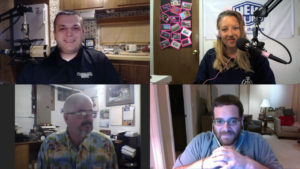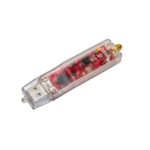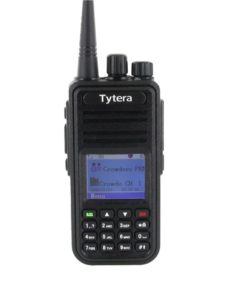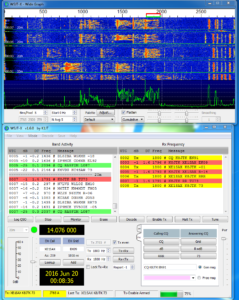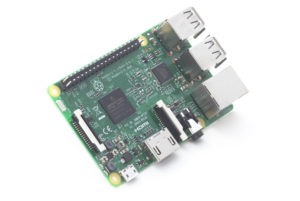One of the responsibilities of the Technical Coordinator in the Ohio Section is to submit something for the Section Journal. The Section Journal covers Amateur Radio related things happening in and around the ARRL Ohio Section. It is published by the Section Manager Scott – N8SY and articles are submitted by cabinet members.
Once my article is published in the Journal, I will also make it available on my site with a link to the published edition.
You can receive the Journal and other Ohio Section news by joining the mailing list Scott has setup. You do not need to be a member of the ARRL, Ohio Section, or even a ham to join the mailing list. Please sign up!
If you are an ARRL member and reside in the Ohio Section, update your mailing preferences to receive Ohio Section news in your inbox. Those residing outside the section will need to use the mailing list link above.
Updating your ARRL profile will deliver news from the section where you reside (if the leadership chooses to use this method).
Go to www.arrl.org and logon.
Click Edit your Profile.
You will be taken to the Edit Your Profile page. On the first tab Edit Info, verify your Email address is correct.
Click the Edit Email Subscriptions tab.
Check the News and information from your Division Director and Section Manager box.
Click Save.
Now without further ado…
Read the full edition at: http://n8sy2.blogspot.com/2017/05/the-ohio-section-journal-hamvention.html
THE TECHNICAL COORDINATOR
Jeff Kopcak – TC
k8jtk@arrl.net
DMR: you’re hearing a ton about it from the Ohio Section and the number of repeaters has exploded with nearly 60 in the state. DMR saw growth due to inexpensive offerings of quality radios at last year’s show. I suspect this year will be no different with new offerings from vendors, possibility of dual band radios around the corner, and many more groups supporting DMR.
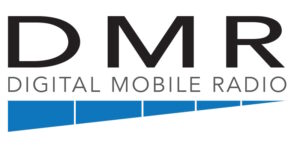 How many of you know the terminology and could program a DMR radio from scratch? Passing around a code plug makes the mode seem plug-and-play and it’s a great way to get started. Relying on existing code plugs leaves most of us unable to change the configuration of our own radios or even know how it works. What happens if you need to change programming, add a repeater, the code plug information is old, or wrong?
How many of you know the terminology and could program a DMR radio from scratch? Passing around a code plug makes the mode seem plug-and-play and it’s a great way to get started. Relying on existing code plugs leaves most of us unable to change the configuration of our own radios or even know how it works. What happens if you need to change programming, add a repeater, the code plug information is old, or wrong?
When I started last year, I found there was very little information available on DMR in ham radio. I learned DMR by doing a couple things. First, I looked at the code plug I downloaded for my TYT MD-380. I got a lot of knowledge playing around with that. There were a couple things I wasn’t quite sure about. When I got together with a buddy who was interested in DMR, we further played around with the software, tried different settings, and I filled in those gaps.
With the continued support from the Ohio Section, one of our Technical Specialists, Dave – KD8TWG has been giving training presentations on radio programming and he created a DMR Learning Series explaining terminology and etiquette: https://kd8twg.net/category/dmr/dmr-learning-series/.
I put together a paper with the goal of explaining DMR to the person just starting out and include some more technical descriptions. It started as an idea to write an article or two for the OSJ around Dayton time so anyone jumping in would have good information. After starting the project, it quickly became much bigger.
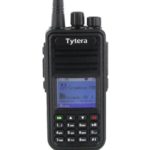 The first writing talks about the DMR standard and compares it to other made-for-ham-radio modes like D-STAR and Fusion. One topic that might be of interest is the section on ‘is it legal?’ I’ve heard this question come up frequently and even clubs in the section are questioning the legality. Radios, CPS, code plugs, registering for a DMR ID are all discussed. I talk about repeaters, c-Bridges, networks, and some of the issues one might encounter. Terminology covered includes time slots, talk groups, reflectors, contacts, RX Group Lists, channels, zones, scan lists, and hotspots: http://www.k8jtk.org/2017/05/10/dmr-in-amateur-radio-terminology/.
The first writing talks about the DMR standard and compares it to other made-for-ham-radio modes like D-STAR and Fusion. One topic that might be of interest is the section on ‘is it legal?’ I’ve heard this question come up frequently and even clubs in the section are questioning the legality. Radios, CPS, code plugs, registering for a DMR ID are all discussed. I talk about repeaters, c-Bridges, networks, and some of the issues one might encounter. Terminology covered includes time slots, talk groups, reflectors, contacts, RX Group Lists, channels, zones, scan lists, and hotspots: http://www.k8jtk.org/2017/05/10/dmr-in-amateur-radio-terminology/.
The second will deal with creating a sample code plug for a factitious repeater, tying all the terminology together. Afterwards, you will be able to create and update your own code plugs! Stay tuned to next month. DMR repeaters in Ohio: https://www.repeaterbook.com/repeaters/feature_search.php?state_id=39&type=DMR.
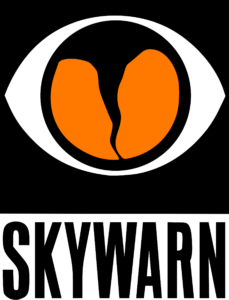 At the request of Cuyahoga County Skywarn, Technical Specialist Dave – KD8TWG has installed a Sage EAS ENDEC device on the 146.76 repeater in Cleveland. 146.76 is the primary Skywarn repeater for Cuyahoga County. The device is the same used by radio and television stations to broadcast Emergency Alert System messages. It monitors NOAA weather radio frequencies and broadcasts tornado watches/warnings, thunderstorm watches/warnings – for Cuyahoga County, and the weekly EAS test. It’s been performing flawlessly!
At the request of Cuyahoga County Skywarn, Technical Specialist Dave – KD8TWG has installed a Sage EAS ENDEC device on the 146.76 repeater in Cleveland. 146.76 is the primary Skywarn repeater for Cuyahoga County. The device is the same used by radio and television stations to broadcast Emergency Alert System messages. It monitors NOAA weather radio frequencies and broadcasts tornado watches/warnings, thunderstorm watches/warnings – for Cuyahoga County, and the weekly EAS test. It’s been performing flawlessly!
The data and attention tones are the same everyone is familiar with. These are the same one would hear tuning to a broadcast radio or TV station during an event. In order to not clobber an existing QSO, the device will delay playing the alert until the repeater is free. DTMF tones are available to Skywarn NCS’s to disable the alerts if it begins to interfere with the net. Some innovative working being done here. Thanks for the hard work Dave.
Anthony – K8ZT, our ASM for Educational Outreach, shared some links with me from his site. He has put together lists of great resources for doing projects, ideas for the class room, training classes, and build projects a group my want to coordinate:
- www.k8zt.com/tech – electronics, kits, homebrewing, calculators, Arduino, and Raspberry Pi.
- www.k8zt.com/electronics – learn about electronics and radio basics.
- www.k8zt.com/building – kits and homebrew.
- www.k8zt.com/ard-rasp – projects and instructables for Raspberry Pi and Arduino.
- www.k8zt.com/calc – calculators, spreadsheets, data analytics, and reference tables.
After my write up of podcasts last May (http://www.k8jtk.org/2016/05/15/ohio-section-journal-the-technical-coordinator-may-2016-edition/), I try to catch ones that feature a ham in the Ohio section. QSO Today episode 144 featured John Ackermann – N8UR. John was a past president of TAPR (which I’m a member) 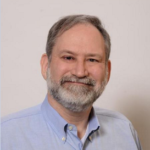 and is a big proponent of open source hardware and software (openly sharing designs that make the community better). Eric and John talked about his usage of SDR radios and this collection of test equipment. He’s done alot of experimenting with APRS and shares some of his lessons learned. I especially liked his idea that hams can achieve much greater data transfer speeds in the 3 GHz portion of our spectrum. Maybe others in the section will develop technology to utilize that spectrum more than we are currently. The podcast is available on your favorite podcast app by searching for “QSO Today” or by going to: http://www.qsotoday.com/podcasts/n8ur.
and is a big proponent of open source hardware and software (openly sharing designs that make the community better). Eric and John talked about his usage of SDR radios and this collection of test equipment. He’s done alot of experimenting with APRS and shares some of his lessons learned. I especially liked his idea that hams can achieve much greater data transfer speeds in the 3 GHz portion of our spectrum. Maybe others in the section will develop technology to utilize that spectrum more than we are currently. The podcast is available on your favorite podcast app by searching for “QSO Today” or by going to: http://www.qsotoday.com/podcasts/n8ur.
Don’t forget #HamNation300 special event is starting the Wednesday following Dayton. There will be stations operating D-STAR, DMR, Echolink, possibly Fusion, P25 and anything else we can get our hands on – in addition to SSB. I will be doing D-STAR, JT65, and maybe PSK too for some HF digital contacts. Points challenge is available for those who enjoy the social aspect of a special event. Tune in to Ham Nation (twit.tv/hn) every Wednesday evening. Details can be found on our event page: https://www.hamnationdstar.net/2017/04/05/ham-nation-300-special-event/. I will also be participating in the Ham Nation forum at Hamvention on Saturday, 10:30a in Room 1.
The show featured the digital net controllers this past Wednesday (5/10). My ugly mug was featured along with my good friend Andrew- WA8LIV from the DMR net and Dave – N3NTV from the Echolink net. You can watch the segment if you dare: https://youtu.be/afWX5kQSBAg?t=1h11m27s or download it at: https://twit.tv/shows/ham-nation/episodes/299. There’s a reason (more than one?) I stayed behind the camera when I worked TV production. I kid, check it out and join in the fun of #HamNation300.
That’s about it for this month. I’m looking forward to meeting all of you at Dayton (er, Xenia) this year. I’ve heard there were a record number of ticket pre-orders which I hope means a successful year for Hamvention. One thing I can guarantee for this year: it will be different for all of us. I’m excited to see what’s in store at this new venue. Get your shopping lists ready…. and see you at Dayton! Thanks for reading and 73… de Jeff – K8JTK

